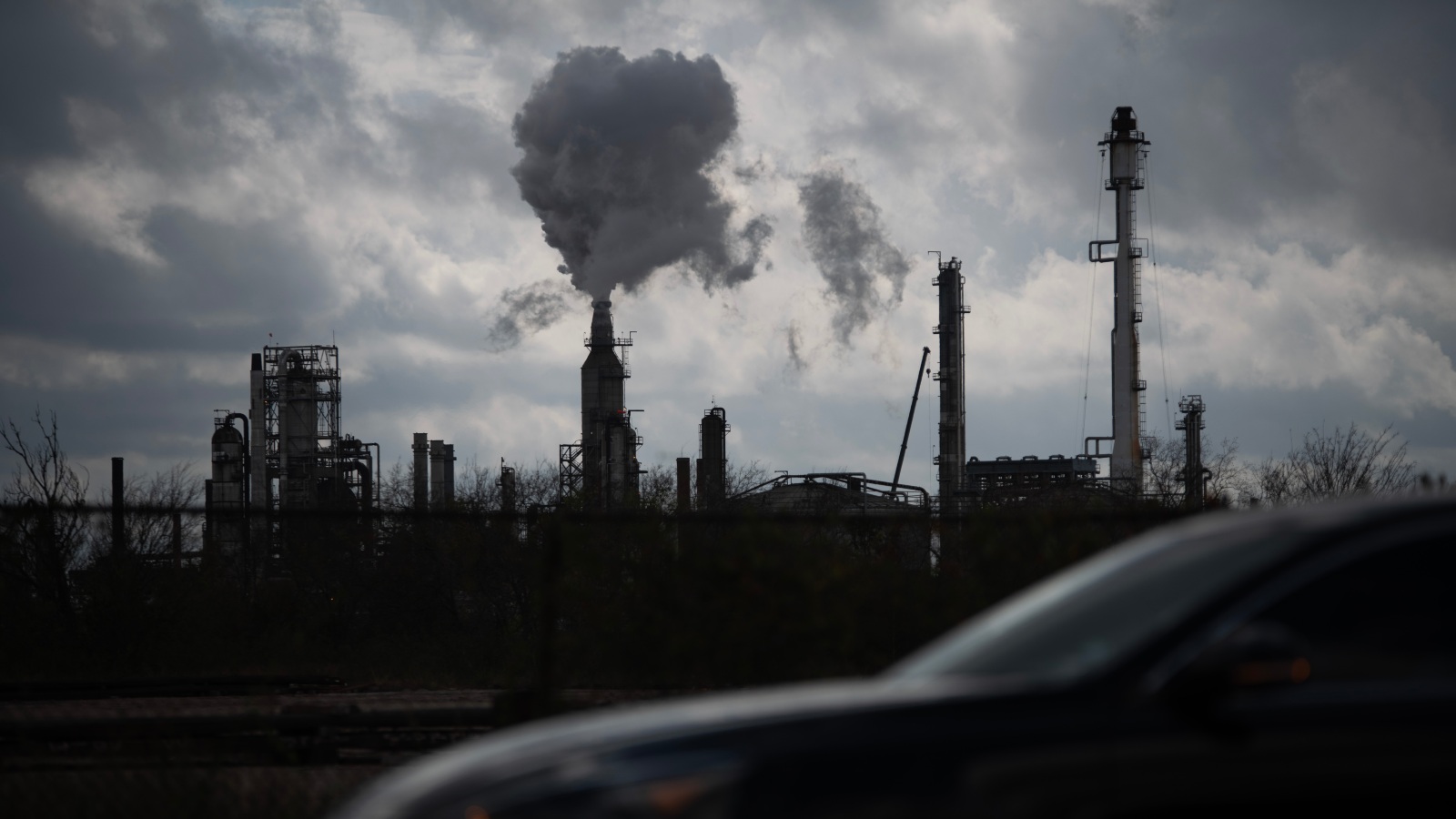In June, Public Health Watch, the Investigative Reporting Workshop and Grist published a year-long investigation about pollution, power, and politics in the Texas petrochemical industry. This story shows what has happened in the six months since.
One by one, the residents filtered into the small community center and found seats in the rows of plastic chairs. Some were teenagers wearing yellow-and-black Galena Park High School letter jackets. Others were parents and grandparents juggling children. Many wore white headphones to hear the Spanish translator standing nearby. Everyone looked worried.
They had gathered on that chilly November night to learn what two new, high-tech monitors had found in the air in Galena Park and Jacinto City, neighboring towns in eastern Harris County, the epicenter of North America’s petrochemical industry. They were prepared for grim news.
“Everyone here knows pollution is a big problem,” said Maricela Serna, a former Galena Park commissioner who has one of the monitors on the roof of her tax preparation office. “But we want to know just how bad things really are. We deserve to know. And those in power, especially at the state level, need to know.”
Serna, 66, has lived in Galena Park since 1988 and the stench of chemicals is part of her everyday life. The odor inside her home was so bad one day that a visitor from outside the community thought there was a gas leak and called the fire department. Still, Serna held out hope that the news that night might be positive — that maybe, just maybe, the pollution wasn’t as bad as the odors let on.
But the data from the monitors confirmed her worst fears.
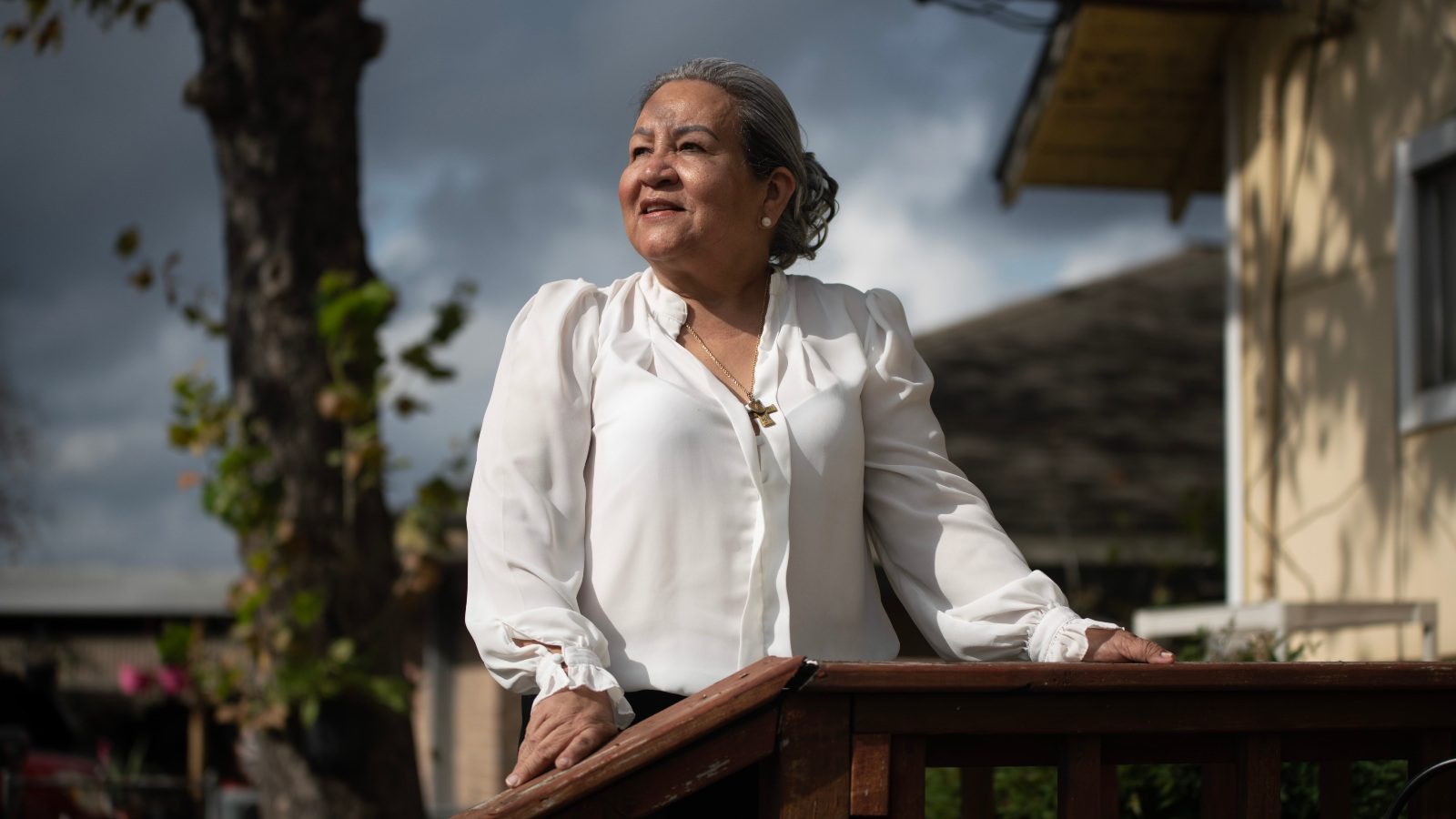
Nitrogen oxides, which the U.S. Environmental Protection Agency has linked to asthma in children and lower birth weight in newborns, were consistently above the agency’s one-hour limit. Ozone, which can aggravate lung diseases including asthma and emphysema, was well above the EPA’s eight-hour limit. Particulate matter, which increases the risk for strokes and heart disease by settling deep into lungs and seeping into bloodstreams, hovered above the EPA’s annual limit.
The readings from Serna’s office, located a block from a thoroughfare lined with petrochemical plants, were especially high. Monthly levels of nitrogen oxides, for example, averaged 170 parts per billion from June through August — nearly double what the EPA says is safe for just one hour.
The data was presented by Juan Flores, a lifelong Galena Park resident and clean-air advocate. He oversees community air monitoring programs for Air Alliance Houston, the nonprofit he works for, and Environmental Community Advocates of Galena Park, a smaller group he helped create and where he is vice president. Over the past few years, the two groups have built a network of air monitors that gives residents basic information about the dangers they are living with.
Regulators and scientists are often skeptical of community-gathered data, because it’s usually less sophisticated than the data state and federal agencies collect. But the community data is still important, because it can be used to rally residents and prod elected officials to acknowledge a neighborhood’s plight. It can also complement the ongoing work of researchers by providing hyper-local information about wind patterns and chemical readings of volatile organic compounds, or VOCs, a diverse group of chemicals that includes some carcinogens.
“This lower-level monitoring… warrants further investigation, but it supports what we’re seeing at the city level,” said Loren Hopkins, the chief environmental science officer for the Houston Health Department. “There’s a huge educational component, too. Instead of just using traditional advocacy, they’re actually using science to support their claims.”
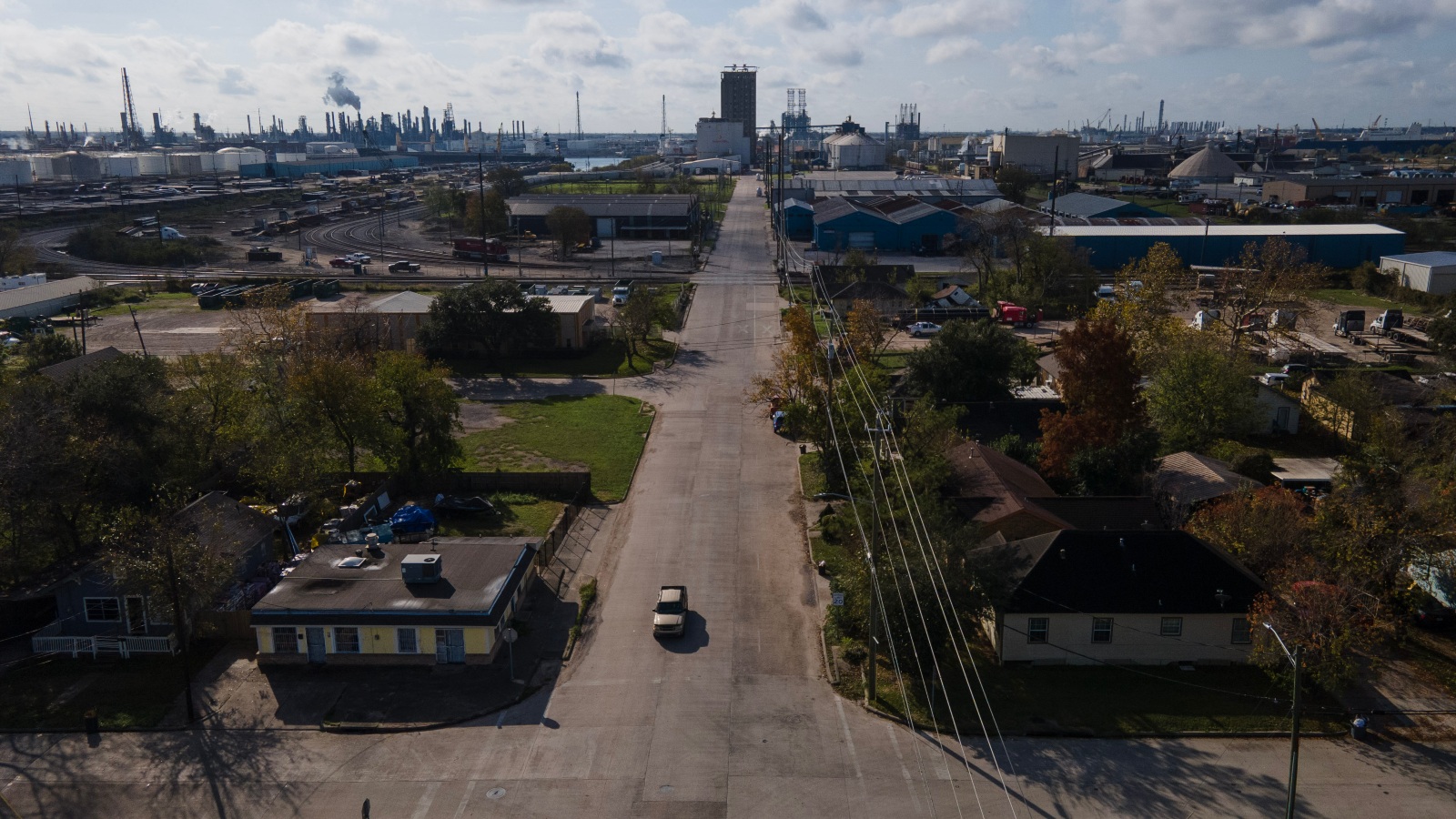
Flores had looked forward to unveiling the new monitoring results that night. He was proud of the work the advocacy groups had done. But when he saw the residents’ worried faces, the reality of what he was about to tell them set in.
They were accustomed to the burning smell of synthetics that filled their schools and churches, the grinding sounds of rail cars and the rumbling of industrial trucks outside their homes and businesses. They were unfazed by the sight of refinery flares burning in the sky above their parks and playgrounds.
It’s one thing to assume the worst. It’s another to be confronted by data that proves it.
“I could tell in their faces… they were shocked,” Flores said. “Reading it out loud just hit me like, ‘Damn, this is really bad.’ I was as horrified as they were.”
Texas State Representative Penny Morales Shaw is also worried about the new monitoring results.
In June, Morales Shaw, a Democrat whose district is in Northwest Houston, vowed to strengthen the Texas Commission on Environmental Quality, or TCEQ, after she read a Public Health Watch investigation of Harris County’s pollution problems. The reporting found there had been nearly 500 illegal chemical releases in the region since 2020, including one that killed two workers and injured dozens more at a LyondellBasell plant. In the six months since the story was released, there have been more than 80 additional illegal releases, according to an analysis of TCEQ records by Public Health Watch.
Morales Shaw said she was “deeply disturbed” by the TCEQ’s ineffectiveness and the mistrust the agency has created in heavily industrialized places like Galena Park. She said her top priorities in the upcoming legislative session, which begins next month, would include raising fines for unlawful emissions and giving local governments more power to push back against polluters.
Juan Flores’ new findings underscore the need for these changes, she said.
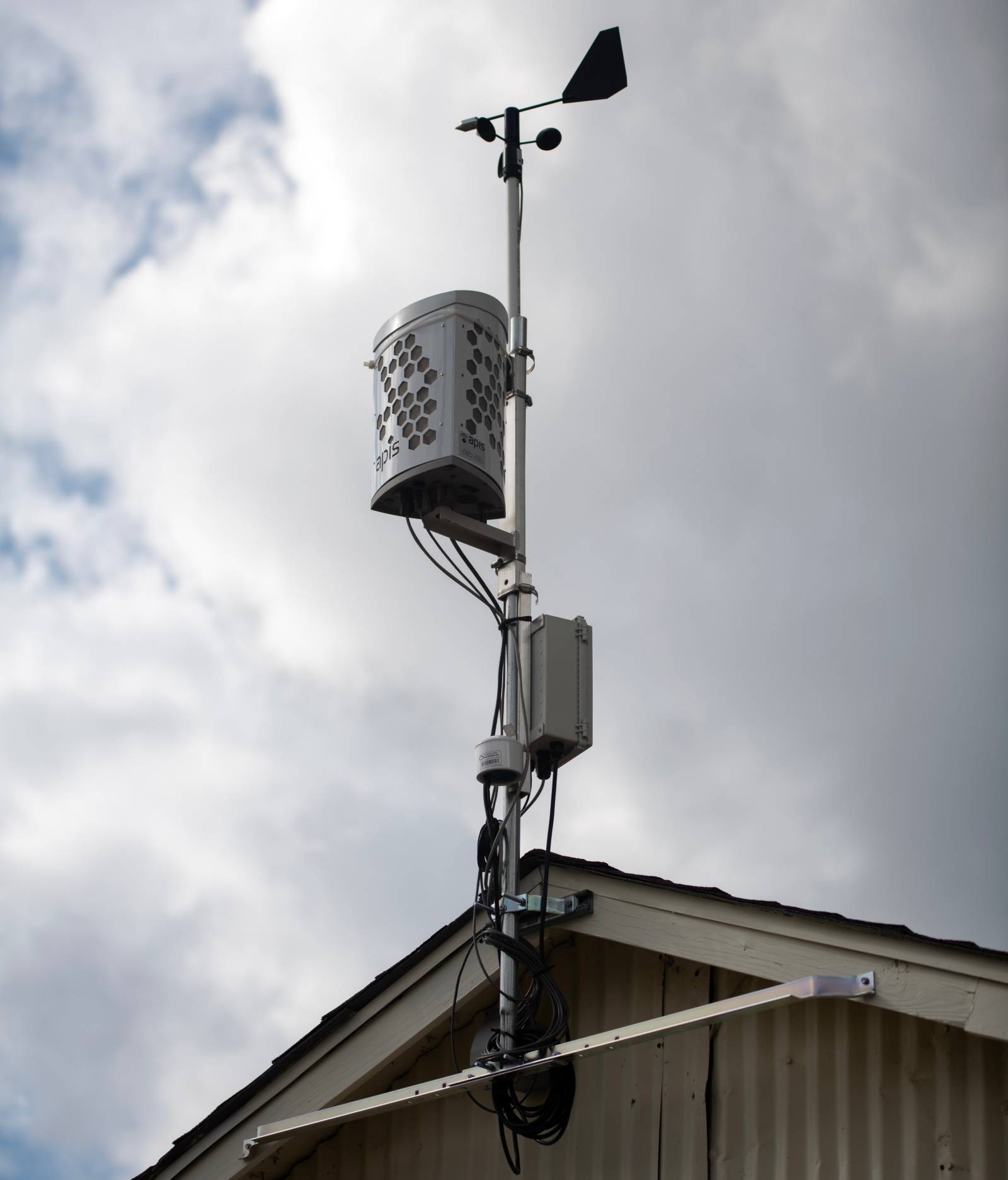
“Successful industry is important because that’s a key economic driver here, but we have to start prioritizing quality of life,” Morales Shaw said. “We’re hired and elected to work for the people. And the people in Galena Park and Jacinto City are suffering.”
State Senator Carol Alvarado, a Democrat who represents Galena Park, also plans to push for environmental reforms in 2023. She said she was “disappointed and disturbed” by the new monitoring results. “But growing up in that area, I can’t say I’m surprised,” she added.
Alvarado wants to increase the TCEQ’s funding so the agency can buy more air monitors and hire more staff. Between 2016 and 2021, the Texas legislature slashed the TCEQ’s funding by 20 percent, even as it increased the state budget by 16 percent.
Other lawmakers have tried, and failed, to persuade the Republican-dominated legislature to strengthen the TCEQ. The oil, gas and petrochemical industries are such powerful forces in the Texas economy that politicians rarely oppose them.
In 2021, the oil and gas industry employed more than 400,000 Texans and contributed nearly $16 billion to the state economy in taxes and royalties, according to the Texas Oil and Gas Association. The chemical industry employs tens of thousands more. The industries are key funders for state leaders, including Governor Greg Abbott, Lieutenant Governor Dan Patrick and Attorney General Ken Paxton, all of whom won reelection in November after receiving millions of dollars in campaign contributions from them.
According to a report by Environment Texas and the Environmental Integrity Project, polluters in Texas were fined for less than 3 percent of nearly 25,000 illegal chemical releases between 2011 and 2016. A TCEQ spokesman told Public Health Watch in June that “the current enforcement rate for reported emission events is over 10 percent.”
A new generation of Harris County leaders is doing what it can to fill the regulatory void left by the TCEQ.
The Democrat-controlled Harris County Commissioners Court — which oversees a multibillion-dollar budget and sets policies for everything from public health to law enforcement — gave the county’s Pollution Control department $5.9 million in 2019 so it could hire more employees and buy air monitors and a mobile lab. In 2022, the court boosted the department’s annual budget by $1.2 million.
This trend is likely to continue, because the November elections gave the Democrats, led by Judge Lina Hidalgo, a 4-1 majority on the court.
Harris County Attorney Christian Menefee said local action is critical when the state fails to protect public health. Since becoming the county’s chief civil lawyer two years ago, he has made suing polluters a priority, even though he says he’s working “with both hands tied behind [his] back.” In addition to facing powerful companies with well-heeled legal teams, he also has to navigate industry-friendly state laws that restrict not only when counties can sue oil and gas companies but also how much money they can sue for.
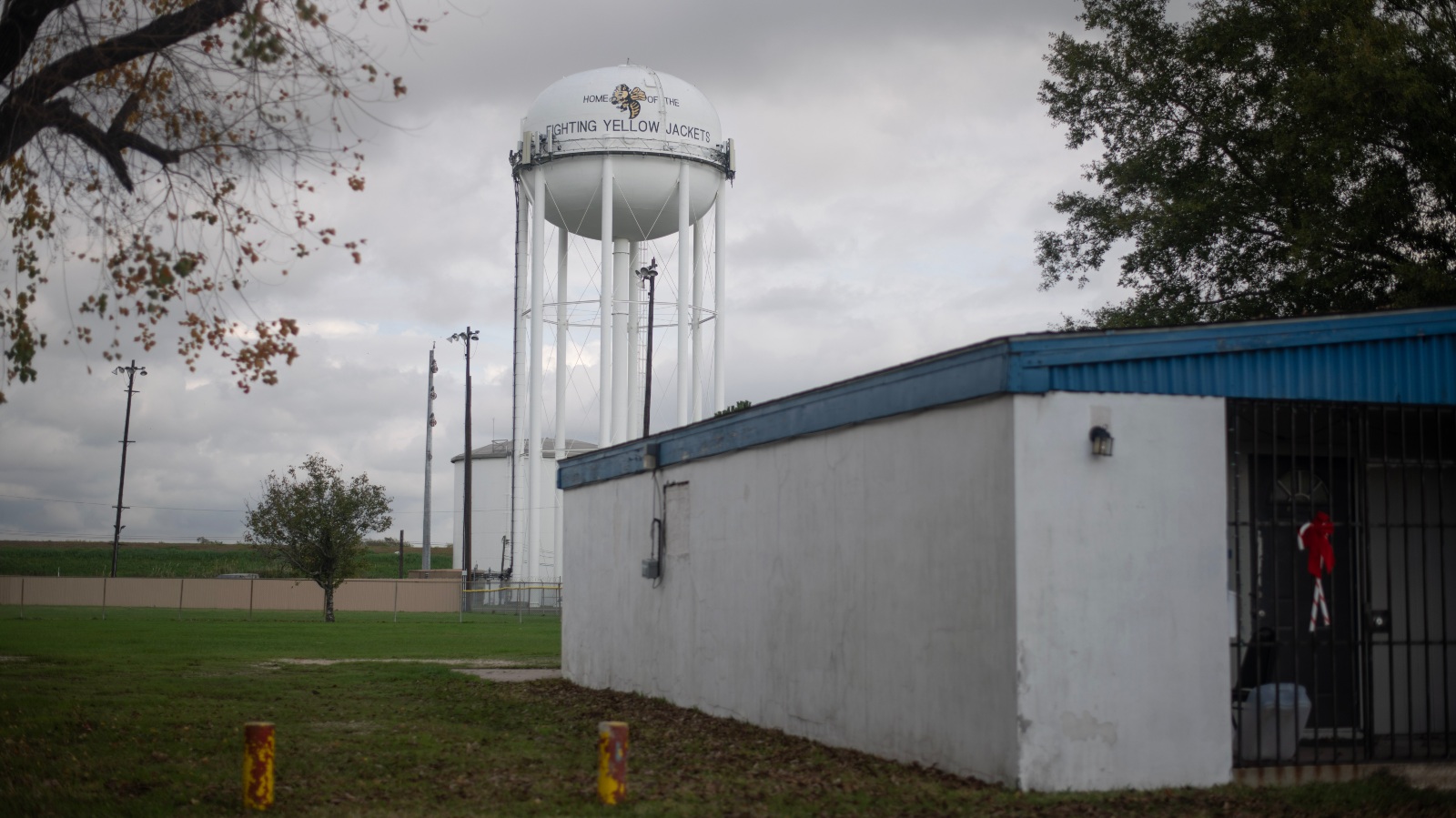
“We’ve had to get creative, find new angles when targeting facilities after emission events,” Menefee said. “Upholding the law shouldn’t be this hard, but the state of Texas has shown time and time again that its first goal is protecting industry, rather than protecting these communities.”
Despite the county’s growing commitment to environmental justice, communities of color like Galena Park, where nearly 30 percent of residents live below the poverty line and 40 percent live within a mile of an industrial facility, still feel left behind. That’s why the local air monitoring network is so important, Flores said.
At first, the network relied on inexpensive PurpleAir monitors that only capture readings for easily detectable pollutants like smoke and particulate matter. In March, it added the two new Apis air monitors that provided the data Flores shared last month. They gather real-time readings for ozone, nitrogen oxides and particulate matter. They also detect overall levels for VOCs.
Next year the network will be able install even more advanced equipment, using a grant from the EPA. It includes $75,000 to buy canisters that can measure emissions from individual facilities, as well as monitors that can identify individual VOCs, including benzene. Benzene is of particular concern because it can cause leukemia and is frequently released by chemical plants and oil refineries.
The grant also gives the network access to mobile monitoring services provided by a private, California-based company. Its equipment can pinpoint the presence of high-risk chemicals in as little as five seconds.
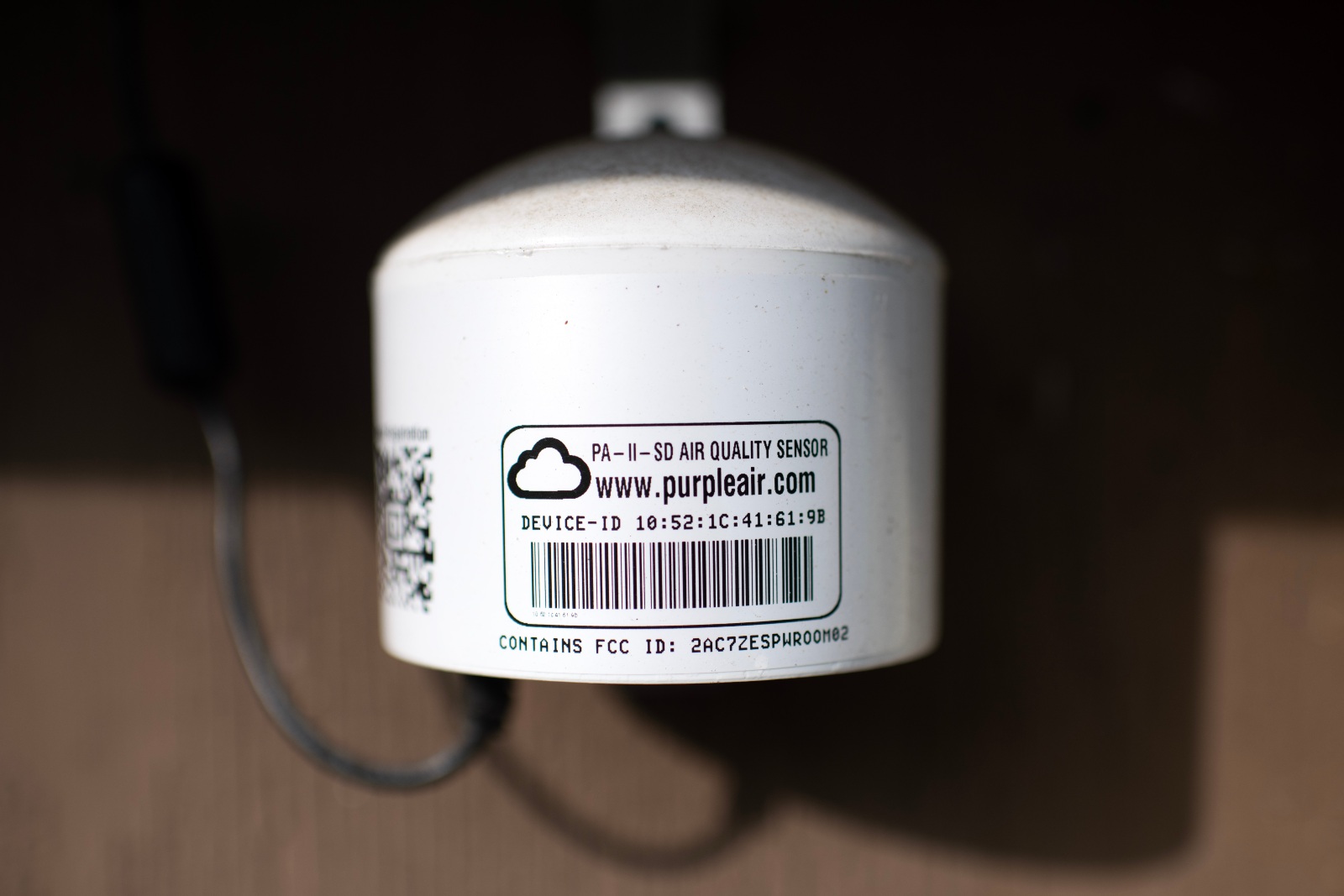
This kind of work should be celebrated, said Hopkins, the Houston Health Department’s top environmental scientist. But communities need more help from state regulators — and they need it now.
“We can keep studying these communities, but the people there are tired of being studied. We need to take action,” Hopkins said. “Tightening permits, enforcing violations… The whole thing would be so much better if we controlled emissions to begin with, instead of trying to clean things up afterwards.”
The need for early intervention is especially apparent in Galena Park and Jacinto City, where residents have seen generations of neighbors ravaged by cancer.
Maricela Serna, the tax preparer with a monitor on top of her office, had a malignant tumor removed from her ovaries in 2012. Her biannual cancer screenings have been clean since then, but she worries the chemicals she breathes every day will cause the disease to return and spread. Her two oldest children moved away from Galena Park to escape the pollution, and they’re urging her to do the same.
But it’s not that simple.
“I have a business to run and am still three or four years away from retiring,” Serna said. “I wish I could just get up and go now. But it’s very expensive to move and we don’t have the money.”

José Ramón, a real estate agent who has a PurpleAir monitor behind his Jacinto City home, said two of his children also left the area. He urged them to get out while they were still young.
“I’ve noticed a pattern: A lot of people, mostly in their late 50s, have called me up to sell their house because they’ve been diagnosed with different kinds of cancer,” Ramón said. “They just want to salvage their health. I want to do the same before it’s too late.”
The November meeting in Galena Park ended with one last reality check.
After all the questions had been asked and answered, Juan Flores paused for a moment, his face looking worn under the fluorescent lights’ yellowish glow.
In September, he told the small crowd, he had been diagnosed with MGUS, a blood disorder that affects plasma cells in bone marrow and diminishes kidney function. MGUS can evolve into multiple myeloma — a blood cancer that, according to the American Cancer Society, has been linked to exposure to high levels of benzene.
“It’s happening to me. I live here with y’all,” Flores said. “And if it’s happening to me, it can happen to you and any other family member.”
As he spoke, Flores looked at his 6-year-old daughter, Dominique, who sat in the front row wearing a red superhero’s cape. She was born with a malignant tumor above her kidney that required chemotherapy and multiple surgeries. Years before, Flores’ father died of a heart attack on the job after spending decades working in refineries. He was just 51.
Flores said his doctor told him there’s a 10 percent chance that his condition will evolve into cancer. But he fears that number will go up if he stays in Galena Park much longer. He recently bought a small plot of land in Trinity, a rural town 100 miles to the north. Someday, he hopes to scrape together enough money to buy a mobile home and move his family away from the pollution.
Savanna Strott with Public Health Watch contributed to this story.

